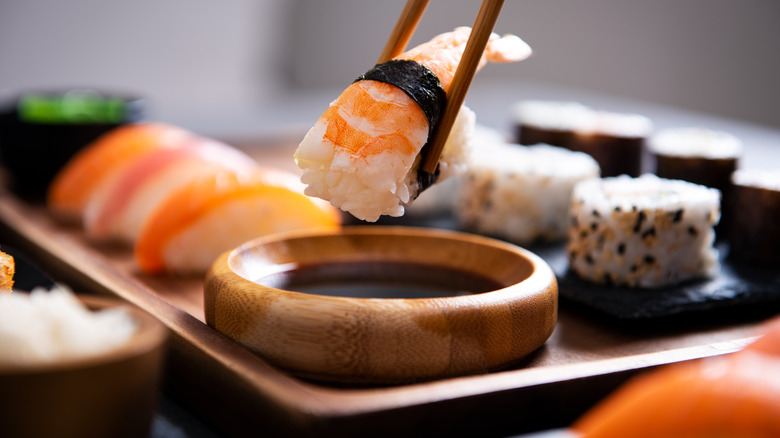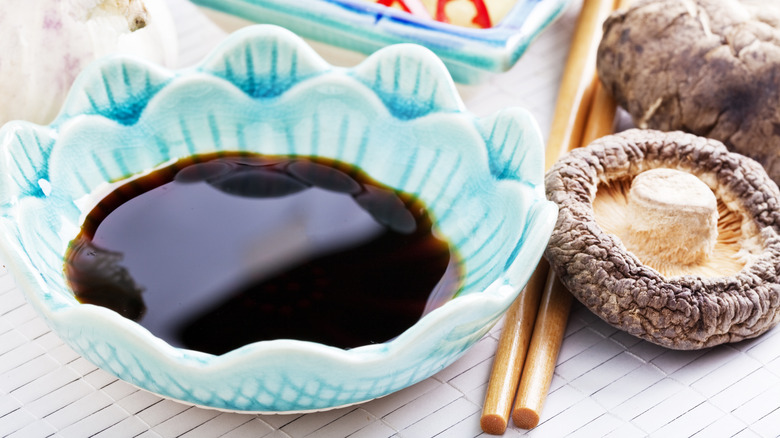Why It's Frowned Upon To Ask For More Soy Sauce At Sushi Bars
Becoming a bona fide sushi master takes many years of training and a lot of experience. Accordingly, diners should abide by the expertise of their sushi chef when it comes to accompaniments like soy sauce. It's considered bad form to request more soy sauce, per BBC, because the request belies the care and consideration that goes into constructing sushi.
By the same token, diners should exercise caution with wasabi and ginger. When soy sauce is served with a dish, wasabi should be added directly to the condiment and not the sushi itself. In the same respect, diners should be choosy about what they eat wasabi with, as it's not meant to accompany every piece of sushi. As for ginger, its purpose is to refresh the palate, which ensures you get the full flavor of each piece. Adding it to sushi disrupts the delicate flavor balance and detracts from the experience, so this practice should also be avoided. As for soy sauce, this accompaniment serves a very distinct purpose when paired with sushi preparations.
Soy sauce is meant to complement sushi, not overpower it
As explained by Sushi University, soy sauce is known as shoyu in Japan. The practice of adding shoyu to sushi preparations first began in the 19th century as a means of preservation and to deter bacterial growth. It was also beneficial for concealing the raw odor of fish. These days, soy sauce is not intended to mask flavors, but used instead to enhance the inherent flavors of fish and other ingredients.
For instance, soy sauce enhances the umami characteristics of sushi thanks to its high concentration of amino acids. According to Kikkoman, umami is one of the five tastes that can be interpreted by taste buds. While bitter, sweet, salty, and sour tastes are relatively easy to comprehend and very well-known flavors, umami is a bit more complex. It's often described as imparting a "meaty" flavor to dishes and is most evident in food that contains lots of glutamate, an amino acid. While beneficial to many preparations, diners should avoid adding too much shoyu to their sushi by using certain techniques.
Tips for eating sushi with soy sauce
In an interview with Insider, Chef Seki Shi explains a few best practices when eating sushi with soy sauce. The chef cautions diners against oversaturation and recommends dunking the nori (aka seaweed) into the sauce instead of the rice portion. Rice will quickly absorb the sauce, which can then throw off the flavor balance. You can also ensure the perfect amount by taking a piece of ginger, dunking it into the sauce, and then rubbing the ginger on the sushi.
The chef also encourages diners to be choosy about which sushi preparations they add soy sauce to. It helps to consider whether the dish already comes with sauce, which is sometimes the case with nigiri sushi. Unlike rolls, nigiri sushi consists of a small piece of raw fish on top of a mound of rice. When accompanied by a sauce, nigiri is best eaten in its original form without additional accompaniments. If you're not sure whether a specific preparation will be enhanced by soy sauce, don't be afraid to ask. Sushi chefs are always happy to impart wisdom to ensure you have an amazing culinary experience.


